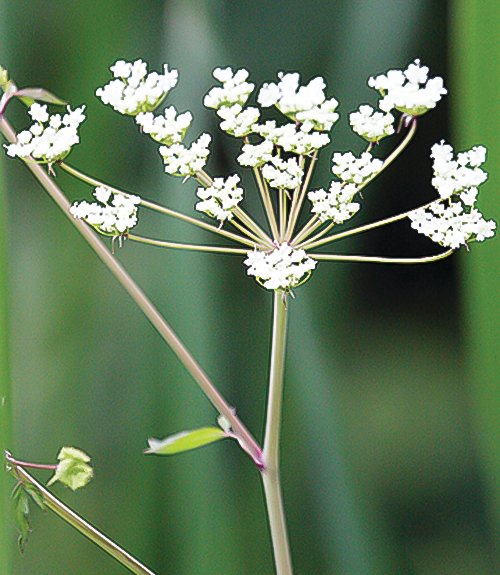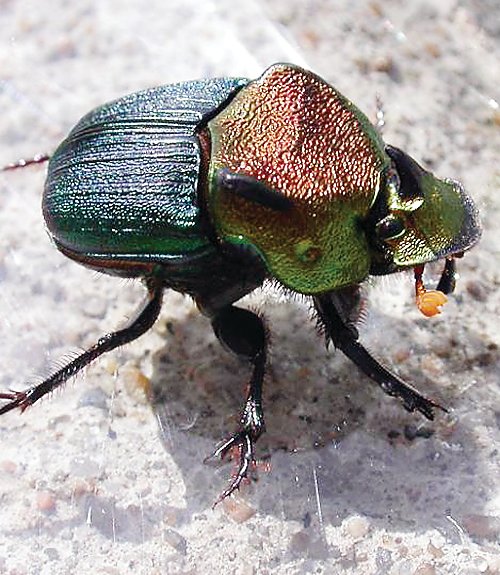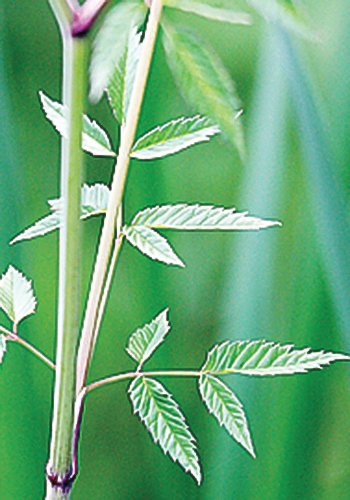Support the Timberjay by making a donation.
A discovery of hemlock
Knowledge, mimicry, and the cycles of life and death
Two decades ago I decided to identify every wildflower that grows on our forty acres of northern Minnesota woods. It seemed unmindful, even disrespectful, to be ignorant of the names of all those …
This item is available in full to subscribers.
Attention subscribers
To continue reading, you will need to either log in to your subscriber account, or purchase a new subscription.
If you are a current print subscriber, you can set up a free website account and connect your subscription to it by clicking here.
If you are a digital subscriber with an active, online-only subscription then you already have an account here. Just reset your password if you've not yet logged in to your account on this new site.
Otherwise, click here to view your options for subscribing.
Please log in to continue |
A discovery of hemlock
Knowledge, mimicry, and the cycles of life and death
Two decades ago I decided to identify every wildflower that grows on our forty acres of northern Minnesota woods. It seemed unmindful, even disrespectful, to be ignorant of the names of all those fleeting beauties.
At first it was a bonanza. I spent hours bumping from one plant to the next as blossoms unfurled in spring. My ignorance was stimulating, everything was novel. Not until you actually search do you realize what you haven’t been noticing, and also how few toys you need to have fun. I now recognize a hundred flowers, all found within a quarter-mile of the cabin at some point in the snow-free season. But as years passed, it became rare to discover a new species.
So one July morning I was thrilled to meet a stranger. The flower was growing in our roadside ditch, and I glimpsed it from the window of the truck -- actually drove by before braking: wait a second, that wasn’t cow parsnip. I backed up and recognized the need to fetch my field guides.
A few minutes later I knelt beside a three-foot tall plant, ticking off the relevant features. Since it resembled a member of a family I knew (parsnip), it was relatively easy to find a match, though the flowers, leaves, and stem placed it with the parsleys. I homed in on an ID: water hemlock. A Minnesota guide called it “Our most poisonous plant....Children have died from eating a small piece of Water Hemlock root....Cattle can eat the leaves and stems, apparently without harm, but they have been killed by pulling up the plants and eating the roots.” Another guide also noted its toxicity, and the fact its tubers have been mistaken for parsnips or other edibles “with fatal results....The plant is [related] to Poison Hemlock, the plant used to poison Socrates.”
Final analysis required exposure of those notorious roots. I dug at the base of the stem and drew the tubers from the soil. They looked like a clutch of miniature dahlia bulbs; they may’ve even looked tasty if I hadn’t read the guidebooks. But what to do with them? I couldn’t abandon a toxin on the ground to perhaps be ingested by a deer or a dog. I considered re-burying them, but an animal might be attracted to disturbed soil and do their own digging.
So, I cut the tubers from the stem and brought them home, thinking to drop them in the garbage or chuck them in the wood stove. But I was suddenly reluctant to discard the root, entranced by an image of Socrates quaffing the hemlock brew, executed for questioning the assumptions of his society. I felt morbidly vigorous in possessing a poison I’d exhumed from the ground, like a shaman or wizard. A few days before, I’d seen two amanita muscaria mushrooms sprouting beside the path to the lake. They are also lovely and toxic, and with a couple of jars I could start a collection, have potent specimens lined up on a high shelf like a sorcerer’s laboratory at Hogwarts. Though, it should be said, I have no victims in mind.
The urge to preserve the root was spurred by the joy of discovery and learning, and yes, by the real power of knowledge. It’s a reason people collect specimens of almost everything. A little curiosity, a little digging, and a field guide – the latter being handy for avoiding the perils of trial and error in this case – had given me the capability to kill surreptitiously. (Leaving aside the potential difficulties of actual administration of an effective dose, and the prospect of a long prison term.)
Appropriately, I happened to be reading biologist Bernd Heinrich’s engaging book Life Everlasting: The Animal Way of Death. Heinrich is a legendary observer, and E.O. Wilson, no slouch regarding research, has called him “one of the finest naturalists of our time.” A subject of Heinrich’s work has been dung beetles, of the scarab family. There are many hundreds of species that harvest excrement from such as cows (here in Minnesota) and elephants, and roll it into balls, inside of which they encase their larva. They bury it, the dung providing shelter and nourishment for the larva, which pupates inside. Eventually a beetle rises from the ground, or “from the grave” as it were. The University of Minnesota Extension Service notes dung beetle behavior can significantly contribute to soil fertility and the mitigation of livestock pests.
This beguiling process was noticed by our ancient ancestors, perhaps offering hints about the nature of life and death. Most notable, at least in the context of the dung beetle, were the Egyptians, to whom, Heinrich notes, “...the dung scarab beetle represented Khepri, the sacred scarab that rolled Ra, the sun god, up into the sky in the morning.” The ability of insects to metamorphose – a seeming resurrection – provided observers more than metaphor. It’s probably no accident that Egyptian mummies resemble the pupa of a scarab beetle, and that corpses so-wrapped were provided with food “in a dark, concealed chamber with a long tunnel (such as that dug by scarab beetles)...” – Heinrich. During the embalming process – end of the “larval” stage? – the Egyptians usually excised the corpse’s heart and replaced it with a carved scarab. A Minnesota junebug, member of the scarab family, affords you an image.
It’s no revelation that we learn from watching the natural world, and while no mummies have emerged, vibrant, from their “pupas,” I admire the keen observation that inspired the ancients to mimic the life cycle of dung beetles. After all, if it worked for the bugs....
Via such mimicry I once fooled a whitetail doe. In a patch of scrub oak growing on bare rock, where I’d been treading almost silently, the deer materialized from cover and froze. We were near Devil’s Cascade in the Boundary Waters Wilderness. She was fifteen yards away and stared at me, ears twitching. I was also still, staring back, when a light breeze brushed an oak leaf against my cheek. It sparked an idea. I slowly turned my head, snatched a leaf with my teeth, pulled it loose, and made a show of chewing. The doe stepped closer, and I repeated the move, acting like a harmless herbivore. She continued to approach – curious? puzzled? hungry? – until we were only twenty feet apart. I was hunting bear and happened to have a rifle in my hands. As an experiment I raised the weapon to my shoulder and aimed. The doe didn’t budge. Only when I spoke – “I’m teasing you!” – did she bolt. So, if you’re stalking prey and have lost the advantage of stealth, imitate herbivores.
Following these threads of our relationships serves as reminder that we can’t live without destroying other life. It’s how the biosphere functions; we can’t change it. But we can acknowledge and respect those lives, can learn who and what they are, can take only what we need, can express our gratitude with admiration and enumeration. My list of wildflower species (many of them edible) is a testament. There is joy in that.
Perhaps this lesson could’ve been a fit topic for Socrates. The philosopher and teacher left no writings, but his legacy was transmitted by others. Diogenes Laertius wrote of him: “Often when looking at a mass of things for sale, he would say to himself, ‘How many things I have no need of!.... having the fewest wants, I am nearest to the gods.’”
Well, that’s no stimulus for the Gross Domestic Product. Small wonder they gave him the hemlock. But I’m sympathetic to his message. For much of my fun, all that’s required is time, attention, and guidebooks. And sometimes a little mimicry.
Peter M. Leschak is the author of Hellroaring, Trial by Wildfire, Ghosts of the Fireground, and The Snow Lotus, among others. He lives in Side Lake, and is a regular contributor to the Timberjay.













